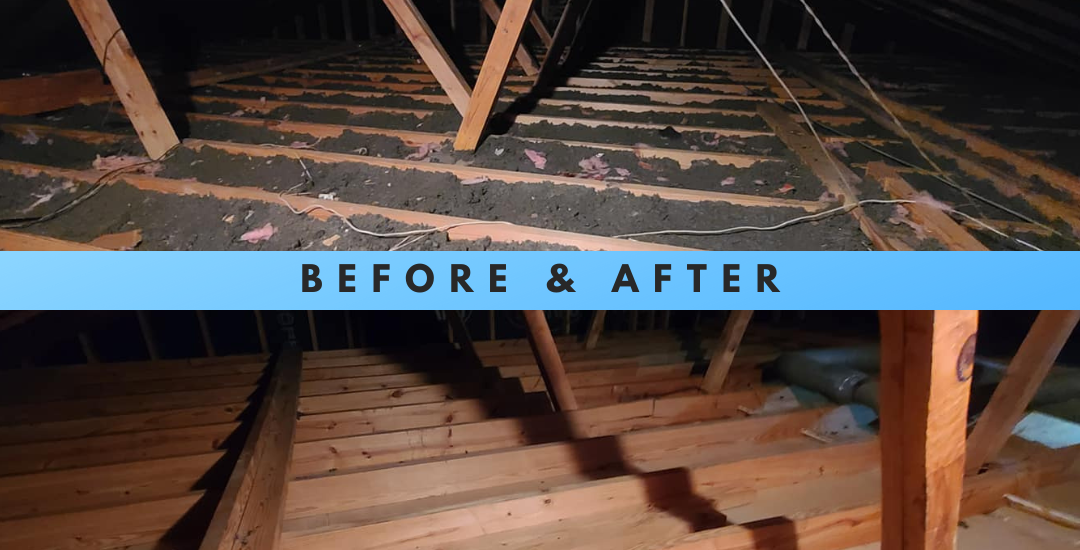After having installed or sold over 6 million pounds of attic insulation since 1998, I’ve developed a few rules that our company lives by regarding selling attic insulation upgrades to homeowners.
These simple “rules” have brought more comfort and joy to thousands of homeowners in our Decatur and Atlanta market.
Understand, this didn’t happen right away. These rules have evolved over many thousands of homes and families who have been helped from our services. A big part of my day is answering email, text messages, and speaking on the phone with homeowners. After all this experience, I’ve developed some principles that I rarely if ever waver from.

Here are ten rules I always live by, when consulting homeowners about their attic insulation.
1. Rarely is it wrong to upgrade your attic insulation. If your home is uncomfortable, generally speaking, get suspicious about your attic insulation. Why? Because it’s the low-hanging fruit. Your hvac system has annual inspections, even if it’s only you doing the inspection when you change your filter. But who ever inspects your attic insulation? No-one is dedicated to care about your attic insulation! Some of the biggest rebates I see from utility companies are for attic insulation upgrades. They know that improving attic insulation is the quickest way to reduce homeowner-demand on the electric grid.
2. Always install the ENERGY STAR recommended level of attic insulation. Here at Bird Family Insulation, we make it easy for a homeowner to consider the upgrade from R-40 to R-50. It’s only fifteen cents per ft2 to upgrade to the ENERGY STAR R-50 attic service. You need it.
3. If you’re buying fiberglass attic insulation, get more. There are two very important reasons for this. Fiberglass attic insulation is more porous than cellulose insulation. Convective heat gain and convective heat loss is very real. Therefore, I always tell homeowners who are deciding on a competitor who only installs fiberglass insulation – get more. If they were considering my R-50, ask for R-60 from the fiberglass guy. Secondly, as temperatures in your attic get extremely hot or extremely cold, the R-Value of fiberglass insulation actually drops! Go ahead, google it. Type the question, “Does R value suffer in fiberglass insulation as attic temperatures get hot or cold?”
4. It pays to add a few inches of cellulose insulation over old, tired fiberglass insulation, but it doesn’t pay to add loose-fill fiberglass insulation over cellulose insulation. Loose fill fiberglass insulation is a low-density product and cellulose is high density. The high density cellulose earns it’s R Value by blocking airflow. Adding a few inches of cellulose “convection-stopping” insulation works wonders when applied over the air-porous fiberglass insulation. But it doesn’t make sense to reverse the order.
5. Always install cellulose insulation with moisture*. This is referred to as stabilized cellulose. Why is this a rule for Bob? Because adding a tiny amount of moisture to the cellulose does two things: It gives the installer a dust-free environment in the attic while he’s installing your cellulose. And moisture turns the wheat starch in the cell walls into a glue-like substance that “binds” the cellulose fibers together to create a monolithic thermal blanket over your attic floor. In 24 to 48 hours, the moisture evaporates in your vented attic. *Vented attic, loose-fill application.

6. If you can’t get stabilized cellulose, or if you choose fiberglass insulation for your attic upgrade, you must insist on air-sealing your attic floor. This air sealing measure is a separate service from your installer. Because loose-fill fiberglass is so porous (allows for air movement), you should seriously consider paying for the air sealing service. Air sealing the attic floor is where a professional uses expanding foam to seal the gaps, holes, penetrations, etc in your ceilings. Very important!
7. Always seal and insulate the attic access. Whether it’s a pulldown attic ladder, or a scuttle hole, it needs attention. This is a big hole in your ceiling!
8. Got a whole-house fan? Get the shutter seal accessory. That aluminum shutter is extremely inefficient at sealing and protecting your living space from the hostile attic environment. In fact, I’ve been known to include the shutter seal for free in certain proposals, simply because there was enough money in the job for me, and my client hadn’t selected the shutter seal as an accessory. It’s a huge hole in the ceiling!
9. If anyone in the house has a sensitive nose (smelling odors, irritants), you should strongly consider not getting spray foam attic insulation. It’s simply too unpredictable as to if that individual will smell a lingering odor. During summer conditions (heat & elevated humidity) is when we receive the most complaints. In fact, this is why our family decided to sell our spray foam rig, after sealing and insulating hundreds of attics for homeowners. It’s a small minority of clients who are unhappy – but it just wasn’t worth the risk for us.
10. If improving your indoor air quality is important to you – air seal your attic floor. And the only way to have complete access to the attic floor is to completely remove the current attic insulation. This is a big deal for lots of our clients. We call this an Attic Makeover. Almost one third of our business is removing attic insulation so we have access to seal the attic floor before installing fresh all-borate cellulose insulation. Our Makeover service rewards homeowners with dramatically less dust and drafts initiating from the attic!
When you experience Bird Family Insulation, just know that these 10 rules are foundational to our “operating system” as we interact with and consult with homeowners in our north Georgia (Decatur/Atlanta) market. These 10 rules are not for our convenience, but what we as a family have learned from helping thousands of homeowners since 1998. For the absolute best experience when upgrading your attic insulation, you should consider following Bob’s rules for success!
Thank you for reading
— Bob Bird





